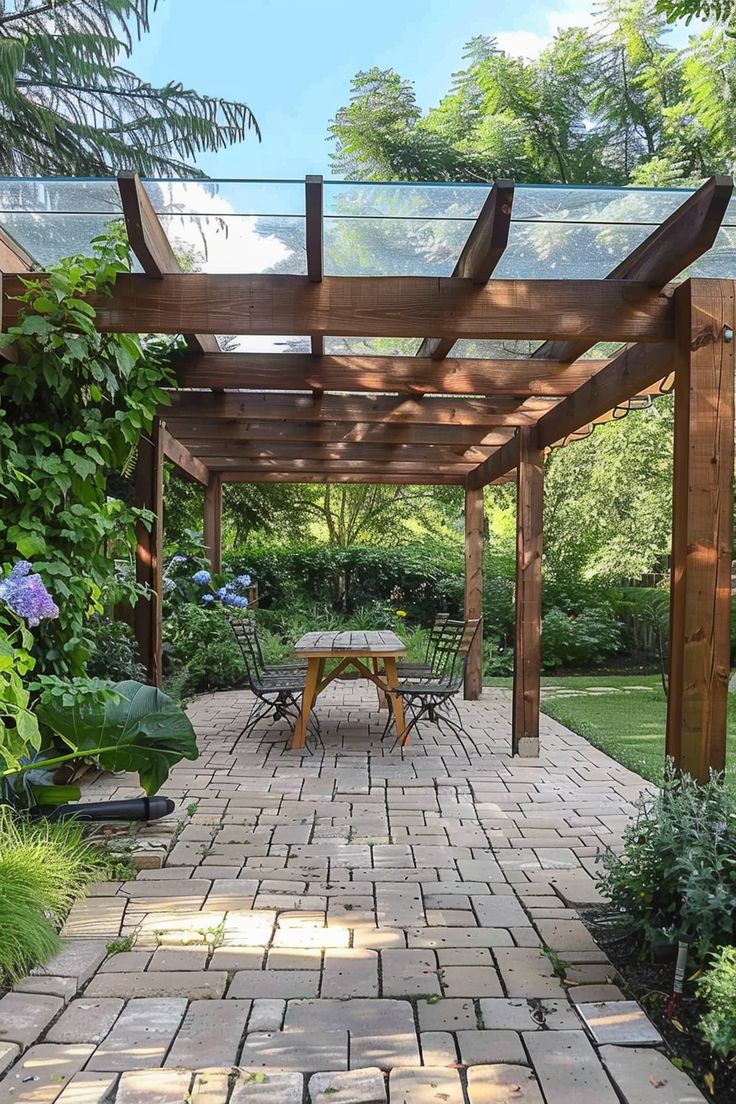While modern design trends often favour sleek lines and industrial materials, there’s an undeniable charm and warmth to rustic aesthetics that resonate deeply with those seeking a more natural, earthy, and inviting outdoor space. Rustic pergolas celebrate organic forms, raw materials, and a timeless connection to the landscape, creating a sense of established comfort and relaxed elegance. These designs are perfect for homes with a traditional, country, or farmhouse style, or for anyone wanting to infuse their backyard with a touch of natural, unpretentious beauty.
Embracing a rustic pergola means creating an outdoor sanctuary that feels authentic, lived-in, and perfectly at home amidst lush gardens and natural surroundings.
1. Embracing Natural Timber: The Heart of Rustic Design
Timber is the cornerstone of any rustic pergola, valued for its inherent warmth, texture, and ability to age gracefully. The key is to highlight the wood’s natural characteristics.
- Rough-Sawn or Unfinished Timber: Instead of smooth, planed surfaces, rustic pergolas often feature rough-sawn timber. This leaves a tactile, unrefined texture that adds character. Leaving the wood unstained to weather naturally to a silver-grey patina is a popular choice, or applying a natural oil finish to enhance its inherent tones.
- Substantial Posts and Beams: Rustic designs often use larger, chunkier posts and beams, creating a sense of solidity and permanence. These can be round logs for an even more organic, lodge-like feel.
- Visible Joinery: Traditional joinery techniques, or even simple, exposed bolts and metal straps, can add to the rustic charm, showcasing the craftsmanship.
2. Organic Forms and Irregularities
Unlike minimalist pergola designs that favour perfect geometry, rustic pergolas often embrace natural imperfections and less rigid forms.
- Natural Curves: If using logs or natural branches, allowing their inherent curves and irregularities to dictate parts of the design can create a truly unique and organic structure.
- Asymmetrical Balance: While still structurally sound, a rustic pergola might feature a more asymmetrical layout or varying beam lengths that feel more natural and less manufactured.
- “Found” Materials: Incorporating salvaged timber, old railway sleepers, or repurposed barn wood can add immense character and a sense of history to the structure.
3. Integrated Greenery: A Living Canopy
The most authentic rustic pergolas are those that are intertwined with nature, becoming a living part of the garden.
- Vigorous Climbing Plants: Encourage lush, abundant growth of climbing plants like grapevines, wisteria, rambling roses, or hardy native climbers. These plants provide natural shade, soften the timber, and create an ever-changing, vibrant canopy.
- Edible Gardens: A rustic pergola can be designed over a vegetable patch or herb garden, with edible vines like beans or cucumbers growing over it, blending functionality with aesthetics.
- Moss and Lichen: Over time, in the right environment, the timber can develop a natural coating of moss and lichen, further enhancing its aged, rustic appeal.
4. Stone and Natural Accents
Complementing timber with other natural materials reinforces the rustic aesthetic, adding texture and grounding the structure.
- Stone Bases or Columns: Using natural stone for the base of the posts or as full columns adds significant visual weight and a timeless, earthy feel. Dry-stacked stone or rough-hewn boulders can be particularly effective.
- Gravel or Natural Paving: Beneath the pergola, opt for natural materials like gravel, flagstones, or large stepping stones rather than perfectly laid pavers or concrete.
- Water Features: A simple, naturalistic water feature nearby, perhaps with rough-hewn stones, can enhance the serene, rustic atmosphere.
5. Warm Lighting and Simple Furnishings
Lighting and furnishings should echo the rustic theme, prioritising warmth, comfort, and natural elements.
-
Edison Bulbs or Lanterns: Instead of sleek integrated lights, opt for exposed Edison bulbs strung across the rafters, or hang rustic lanterns (solar-powered or electric) that cast a warm, inviting glow.
- Wrought Iron or Rattan Furniture: Choose outdoor furniture made from natural materials like solid wood, wrought iron, or chunky rattan, adorned with comfortable cushions in earthy tones.
- Outdoor Fire Pit: A central fire pit, whether built from stone or a simple metal bowl, becomes a natural gathering point, adding warmth and a primal charm to the rustic space.
By embracing rugged materials, organic forms, abundant greenery, and thoughtful natural accents, homeowners can create a rustic pergola that transforms their outdoor space into a charming, natural, and timeless haven.
